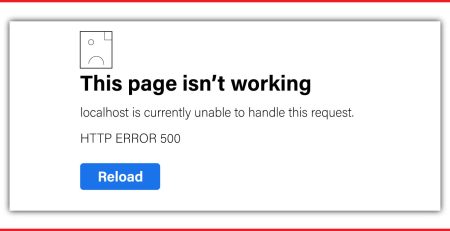How to rank your website on search result page (SRP) in Google
How to make your website rank first in search result page (SRP)
- Optimize your website’s content for relevant keywords to rank your website.
- Build high-quality backlinks from reputable websites
- Improve your website’s loading speed
- Make sure your website is mobile-friendly and has a responsive design
- Use alt tags to describe images on your website
- Create a Google My Business listing and ensure your website is listed on other relevant directories.
- Use structured data markup to help Google understand the content of your website.
- Make sure your website is accessible to Googlebot and free of any technical issues.
To optimize your website’s content for relevant keywords, you can follow these steps:
- Research keywords: Use keyword research tools like Google Keyword Planner or SEMrush to find relevant keywords related to your business or industry.
- Incorporate keywords: Incorporate the keywords you found into your website’s content, including the page titles, headings, and body copy.
- Use meta tags: Use meta tags, such as the title tag and meta description, to include relevant keywords and give search engines a summary of the content on your website.
- Optimize images: Use descriptive file names and alt tags with relevant keywords.
- Use internal linking: Use internal linking to help search engines understand the structure of your website and how your pages are related.
- Create high-quality content: Create high-quality and informative content that provides value to your users and is relevant to your target keywords.
- Monitor your progress: Monitor your website’s performance using tools like Google Analytics to see how well your pages rank for specific keywords and make any necessary adjustments to your optimization strategy.
Build high-quality backlinks from reputable websites.
- Guest blogging: Reach out to websites in your niche and offer to write a guest post in exchange for a backlink.
- Broken link building: Use tools such as Ahrefs or Majestic to find broken links on websites in your niche and offer to replace them with a link to your website.
- Resource pages: Look for websites with a “resources” or “links” page and see if you can add your website to the list.
- Influencer outreach: Reach out to influencers in your niche and ask them to link to your website in their content.
- Content marketing: Create high-quality, informative content valuable to your target audience and share it on social media. This will help to attract natural backlinks.
- Directory submissions: Submit your website to relevant directories such as DMOZ or Yahoo! Directory.
- Press releases: Write and submit them to relevant news websites and blogs.
- Testimonials: Reach out to businesses and offer to write a testimonial for them in exchange for a backlink.
- Social bookmarks: Share your content on social bookmarking websites like Reddit or StumbleUpon.
- Forum and comments: Participate in forums and discussion boards related to your niche and leave comments on relevant blog posts with a link to your website.
How to improve your website’s loading speed
- Optimize images: Compress images and reduce their file size to speed up the loading time of your website.
- Minimize HTTP requests: Reduce your website’s requests by combining and minifying CSS and JavaScript files.
- Use a Content Delivery Network (CDN): A CDN will distribute your content across multiple servers, reducing the load on your server and speeding up delivery to users.
- Enable browser caching: Enable browser caching to store certain elements of your website, such as images and scripts, on the user’s device, so they don’t have to be re-downloaded each time they visit your site.
- Use a caching plugin: Use a caching plugin, such as W3 Total Cache, to improve the performance of your website by caching pages, posts, and other elements of your site.
- Avoid using too many plugins: Too many can slow down your website, so try to use only the necessary ones.
- Monitor your website’s performance: Use tools such as Google PageSpeed Insights and GTmetrix to monitor your website’s loading speed and identify any issues that need to be addressed.
- Update your website regularly: Keep it up-to-date with the latest security patches and updates to ensure it runs smoothly and efficiently.
Make your website mobile-friendly and has a responsive design
A mobile-friendly website is optimized for viewing on mobile devices such as smartphones and tablets. It typically has a simplified layout and navigation, larger text, and buttons and is optimized for touch-based interactions.
A responsive design is a type of design that adapts to the size and resolution of the device being used to view the website. This means that the layout, images, and elements of the website will adjust and rearrange automatically to fit the screen of the device being used. This ensures that the website is easily readable and navigable on any device, without the need for separate mobile and desktop versions of the site. Google bots favor responsive websites to rank the first website on Google’s result page.
Use alt tags to describe images to rank your website
Alt tags, also known as alternative text, describe an image’s content on a website. They are essential for several reasons:
Accessibility: Alt tags make it possible for visually impaired users to understand an image’s content through screen readers.
Search engine optimization: Search engines use alt tags to understand the content of an image, which can help improve the visibility of a website in search results.
Fallback content: If an image cannot load, the alt tag will be displayed in its place, giving users an idea of what the image is supposed to show.
To add alt tags to images on a website, you will need to edit the HTML code for the page. In the code, locate the <img> tag for the image you want to add an alt tag to and add the alt attribute like this: <img src=”image.jpg” alt=” A description of the image”>
Ensure to include a brief and accurate image description, and avoid using irrelevant keywords or phrases.
Create a Google My Business listing and ensure your website is listed on other relevant directories.
A business listing is an online listing of a company’s contact information, including its name, address, phone number, and website. It may include additional information such as business hours, products and services, customer reviews, and photos. Business listings can be found on online directories, such as Google My Business, Yelp, and Yellow Pages. They are useful for businesses to increase their online visibility and reach potential customers.
Google My Business: This is one of the most essential listings for any business. It allows you to create a listing for your business on Google Maps, which makes it easier for customers to find you.
Yelp: Yelp is a popular business directory, especially restaurants and retail establishments. It’s a great way to get customer reviews and ratings, which can help boost your reputation.
Yellow Pages: The Yellow Pages is still a popular directory for businesses, and it’s a great way to get your business in front of potential customers.
Bing Places: Bing Places is similar to Google My Business but for Bing search results. It’s a great way to get your business listed on Bing.
How to Create a Google My Business Listing
- Go to https://www.google.com/business/
- Click on the “Start now” button
- Enter your business name and address in the search bar
- If your business already exists in Google Maps, you will be prompted to claim it. If not, you will be asked to create a new listing.
- Fill in all the required information, including your business name, address, phone number, website, and hours of operation.
- Add photos and videos of your business, if available.
- Verify your listing by phone or postcard.
- Once your listing is verified, you can manage your listing and make any necessary updates.
Other relevant directories to list your website on include:
Yelp, Yellow Pages, Bing Places, Yahoo Local, Foursquare, Citysearch, TripAdvisor, Angie’s List, BBB (Better Business Bureau), Manta, Super pages, Glassdoor, LinkedIn Company Pages, Facebook Business Pages.
Use structured data markup to help Google understand the content of your website.
Structured data markup is a way to add additional information to your website’s HTML code that helps search engines understand your site’s content better. This can include product information, reviews, event information, and more. Adding structured data markup to your site can help Google and other search engines display more accurate and relevant information about your site in search results. This can increase visibility and traffic and rank the website on the Google results page.
To add structured data markup to your site, you can use one of several different formats, including JSON-LD, RDFa, and Microdata. Each format has its own set of rules and guidelines, so it’s essential to choose the one that best fits your needs and to follow the guidelines carefully.
Once you’ve chosen a format and added the structured data markup to your site, you can test it using Google’s Structured Data Testing Tool to ensure it’s correctly formatted and error-free. You can also submit your site to Google’s Search Console to ensure your structured data is indexed and used correctly.
By using structured data markup to help Google understand the content of your website, you can improve your site’s visibility in search results and drive more traffic to your site.
Make sure your website is accessible to Googlebot and free of any technical issues.
- Verify that Googlebot can access your website: Use the Google Search Console to check if Googlebot can access your website. If there are any issues, fix them and submit your website for re-crawling.
- Check for broken links: Use Ahrefs or SEMrush to check for broken links on your website. These can prevent Googlebot from accessing specific pages and negatively impact your search rankings.
- Optimize your site for mobile: Make sure your website is responsive and optimized for mobile devices. Google favors mobile-friendly websites in its search results.
- Test your site’s load time: Use a tool like GTmetrix or Google’s PageSpeed Insights to test your website’s load time. Slow load times can negatively impact your search rankings and user experience.
- Ensure your site is secure: Use SSL to encrypt your website and protect your users’ data. Google favors websites that use HTTPS over those that use HTTP.
- Check for crawl errors: Use the Google Search Console to check for crawl errors on your website. These can prevent Googlebot from accessing specific pages and negatively impact your search rankings.
- Fix any duplicate content issues: Use the Google Search Console to check for duplicate content on your website. These can negatively impact your search rankings and confuse Googlebot.
- Check for broken images and videos: Use Ahrefs or SEMrush to check for broken images and videos on your website. These can prevent Googlebot from accessing specific pages and negatively impact your search rankings.
- Use structured data: Use structured data to help Google understand the content on your website. This can improve your search rankings and increase the chances of your website appearing in rich snippets.
- Monitor your website for technical issues: Use the Google Search Console to monitor your website for technical issues. Address any issues as soon as they arise to ensure that your website remains accessible to Googlebot and free of technical issues.
Summary
The rank of a website in Google search results is determined by a complex algorithm called Google’s PageRank. This algorithm considers various factors, including the relevance and quality of the website’s content, the number and quality of links pointing to the website, the website’s loading speed, and the overall user experience. Other factors that may be considered include the website’s age, the number of pages on the site, and the website’s overall design and layout. To improve website ranking in Google search results, creating high-quality, relevant content, building a strong backlink profile, and ensuring the website is mobile-friendly and easy to navigate is essential. Additionally, website owners should focus on optimizing their website for search engine optimization (SEO) by including relevant keywords and meta tags and ensuring that Google correctly indexes the website.













Leave a Reply